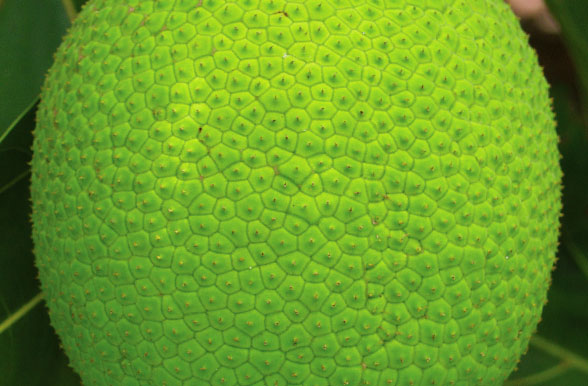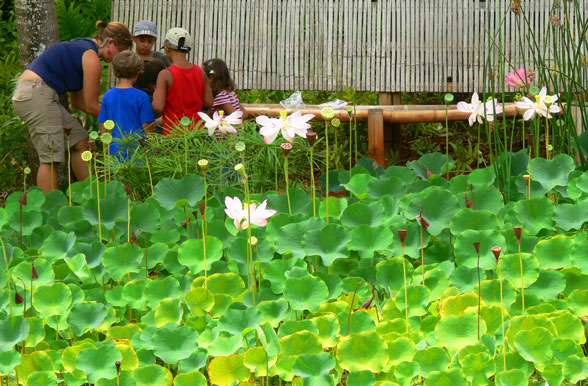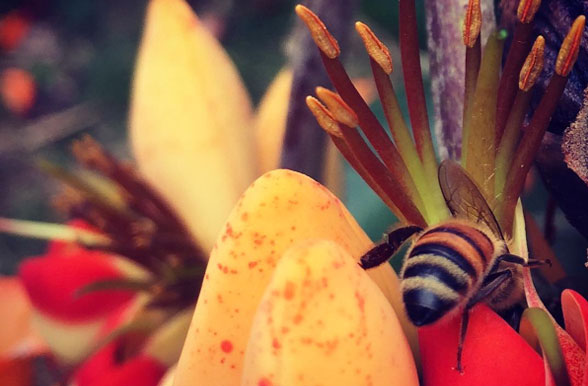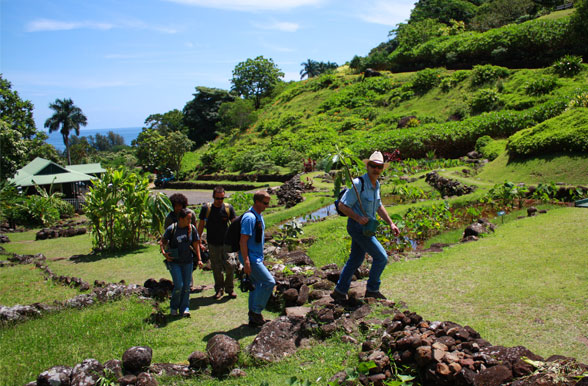Many of the rare plants growing in NTBG’s gardens and restoration sites have been produced by the organization’s sophisticated nursery operations. The climate-controlled propagation lab and greenhouse facilities at the Conservation and Horticulture Center in the McBryde Garden currently produce over 10,000 plants per year. Many of these are rare plants native to Hawai’i and the South Pacific region. NTBG’s other gardens also have basic greenhouse facilities, though much smaller in scale.
One way to understand how the complex operation of propagating an at-risk plant works is to follow its progress after it has been brought to the facility. The process begins for most plants in the nursery when field botanists bring in seeds or cuttings (propagules) collected from wild specimens. The materials for propagation are cataloged — all pertinent data is recorded in the computer database. A pressed plant voucher may also have been collected with this material to confirm its identity. This voucher would be placed in NTBG’s herbarium and the records cross-referenced to the collected material in the nursery. Propagules may go directly to the nursery, or the seeds may be stored in the NTBG Seed Bank. In the nursery, fresh plant cuttings are placed on mist tables, where rooting media are kept moist while the plant material establishes roots. Seeds collected for immediate propagation are prepared by removing any pulp or outer husk. Seeds that are slow to germinate, because of a thick coat, may be scarified (scratched or nicked) and soaked for several hours or more.
When seedlings or cuttings have suitably rooted, they are ready for the next step. They are gently removed from the medium and placed in small pots filled with sterile potting medium (fine black cinders for many plants). At this stage the plants are growing in the shelter of the greenhouse, under carefully climate-controlled conditions; they are automatically watered daily and moderately shaded. As they grow into larger pots, the plants are gradually hardened by moving them to the adjacent shadehouse, where they get more sun but not full exposure. Once they are approaching an appropriate size for outplanting, the young plants are put out in the “sunny nursery” where they get essentially full sun and less water. Once they are fully acclimatized, they are ready to go into the ground, most likely in one of NTBG’s gardens or restoration sites.
Plants adapted to high, cold areas of the islands are treated somewhat differently as they proceed through the facility. After rooting, many of these often-rare plants are moved to the cool room. A swamp cooler creates cooler greenhouse conditions though the evaporation of water. This can help by reducing air temperature by several degrees. a cold greenhouse, a refrigerated room in which temperatures are kept about 10º F. colder than the ambient environment. From there, cold-adapted native species may be outplanted into one of our gardens or restoration sites. The time it takes for a plant to move through the entire facility, from seed or cutting to outplanting, varies from a few months to a few years. By producing large quantities of a diverse assortment of plants, NTBG is best able to propagate species for its conservation, research, and education programs and also to provide plants for community outreach efforts, educational institutions, and collaborating landowners.
.svg)







